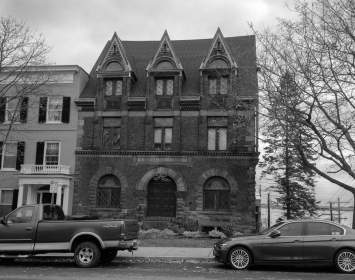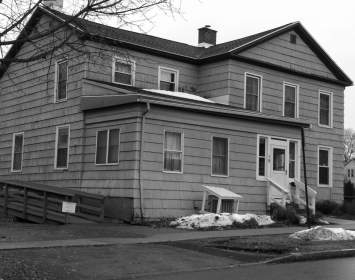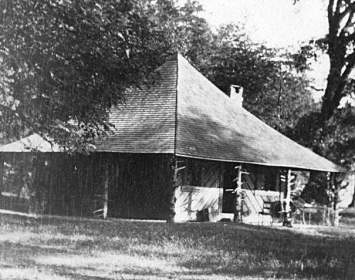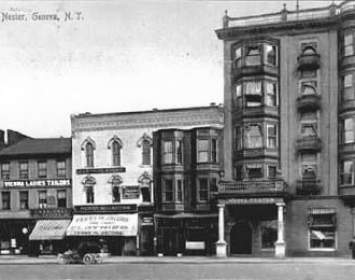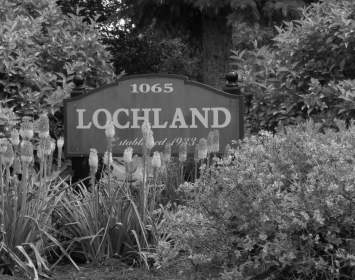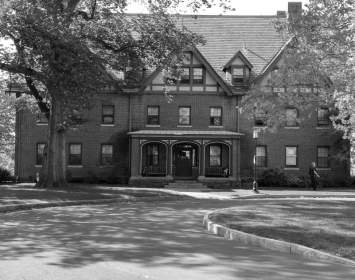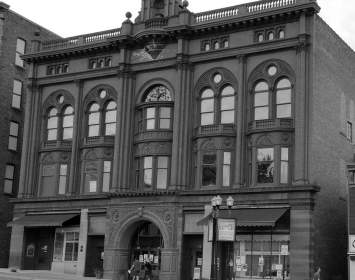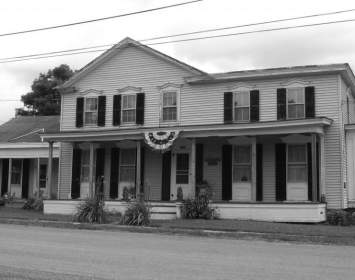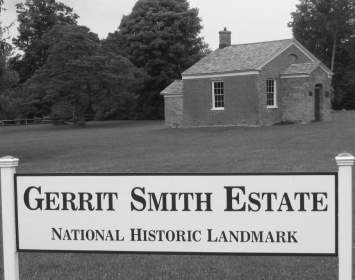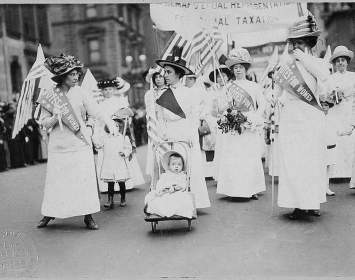Elizabeth Smith Miller Sites
Custom
110.0 Miles
This trail extends from Geneva on the west to Peterboro on the east. All sites on this list include a historical marker, a historic structure, or a museum. Visitors seeking a shorter curated experience might wish to visit the Geneva-area sites in one outing and the Cazenovia and Peterboro sites as a separate journey. The Peterboro sites have limited hours; call ahead or check online. Fossenvue is located in a remote lakeshore park, accessible in good weather by boat or by a one-mile hike from a hilltop parking area.
Elizabeth Smith Miller is too little known for an important activist in the suffrage and dress-reform movements. She also facilitated a major advance in higher education for women.
Elizabeth Smith Miller (1822–1911) was the daughter of Peterboro abolitionist-philanthropist Gerrit Smith and his wife, Ann Carroll Fitzhugh. Both were active in the Underground Railroad, and during her childhood Elizabeth absorbed their convictions and made the acquaintance of numerous fugitive slaves who passed through Peterboro on their way to freedom. By age fourteen, Elizabeth was refusing to eat foods produced by slave labor. In 1837, Elizabeth Smith and her cousin and close friend Elizabeth Cady (the future Elizabeth Cady Stanton) spent most of a day speaking with a prominent fugitive slave, Harriet Powell. Both Elizabeths (Smith and Cady) would later cite these experiences as motivating their own work for social reform.
Elizabeth was an activist and financial supporter of woman’s rights/suffrage (nineteenth-century practice was to use the singular, woman's; later practice was to use the plural, women's) causes. At least one historian asserts that she assisted Stanton in planning the pivotal 1848 Woman’s Rights Convention in Seneca Falls. But she was best known as a dress reformer, inventing the best-known reform-dress style, a practical knee-length skirt over pantaloons, in 1851. The style nonetheless became known as "Bloomers" after the activist Amelia Bloomer popularized the style in her pioneer feminist periodical The Lily.
In October 1843, Elizabeth married Charles Dudley Miller of Cazenovia. Beriah Green, a prominent abolitionist minister and theological radical, officiated at a ceremony held in Peterboro. As newlyweds, the couple lived in Cazenovia for several years. In 1846 they returned to Peterboro, living at her father’s estate until the end of 1850. In January 1851, they moved into a house on the green just south of the Gerrit Smith estate, which Gerrit Smith had gifted to them.
Eighteen years later, Gerrit made the couple another gift of real estate: Lochland, an elegant mansion south of Geneva on a bluff overlooking Seneca Lake. Miller welcomed the move from bucolic Peterboro to the more cosmopolitan Geneva; she lost no time making Lochland a center of Geneva’s cultural and intellectual life, bringing activists and thought leaders together for convivial salons or focused organizing sessions. She befriended the Geneva entrepreneur, philanthropist, and partly closeted freethinker William Smith (no relation to Gerrit Smith), who frequently donated use of his Geneva opera house for suffrage conventions Miller would organize.
In 1875, Miller and six friends and family members founded Fossenvue, a lakeside summer campground at what is now Caywood Point on Seneca Lake’s eastern shore, directly across the lake from Lochland. For one month each summer from 1875 until 1901, the intellectual life of Lochland would migrate to Fossenvue in summer garb. Intellectuals and reformers would linger there, enjoying recreational activities, fresh local food, and cultured discussion.
Miller’s views on religion may be summarized by a comment she made to an interviewer regarding her views on the truth of the Bible: “I who do not believe in its inspiration, cannot expect my views to be accepted by those who most reverently regard it as the Word of God.” In 1878, Miller attended the convention of the New York Freethinkers Association in Watkins, now Watkins Glen. When the sex radical Josephine Tilton and two others were arrested for selling the marriage reform tract Cupid’s Yokes, Miller paid Tilton’s bail—only to renege after reading the tract.
Miller was active in suffrage work lifelong. Late in her life she was simultaneously an officer (active or honorary) in the Woman Suffrage Association of America, the National Woman Suffrage Association, and the New York State Woman Suffrage Association (NYSWSA). In 1897, suffragist Harriet May Mills recruited Miller to organize a statewide NYSWSA conference held in Geneva in 1897. Venues included the Smith Opera House, Collins Music Hall, and the Hotel Nester.
In the early 1900s, Miller and other suffragists persuaded William Smith to make the largest donation of his life—approximately $500,000, about $12 million today—to endow a new college for women that would offer a complete liberal education, seldom offered to women at the time. William Smith College opened in 1908, with Miller making occasional contributions toward the new institution’s operating costs.
Miller died on May 22, 1911, aged eighty-eight. In the same year, the ninety-one-year-old William Smith laid the cornerstone for William Smith College for Women’s first residence hall: Miller House, named, of course, for the indefatigable Elizabeth.
